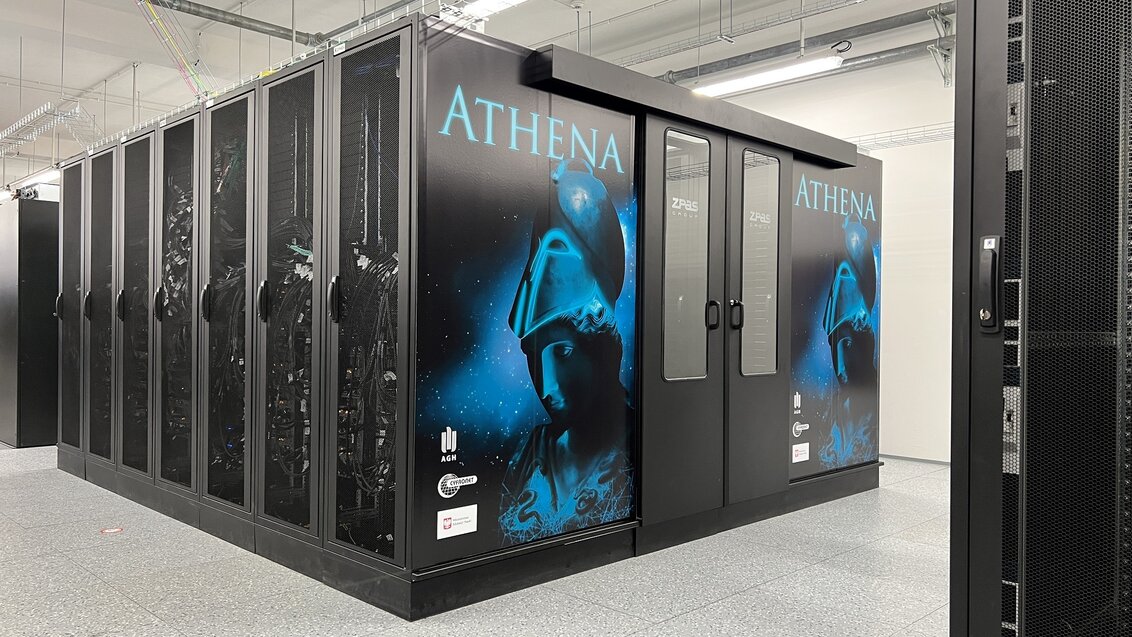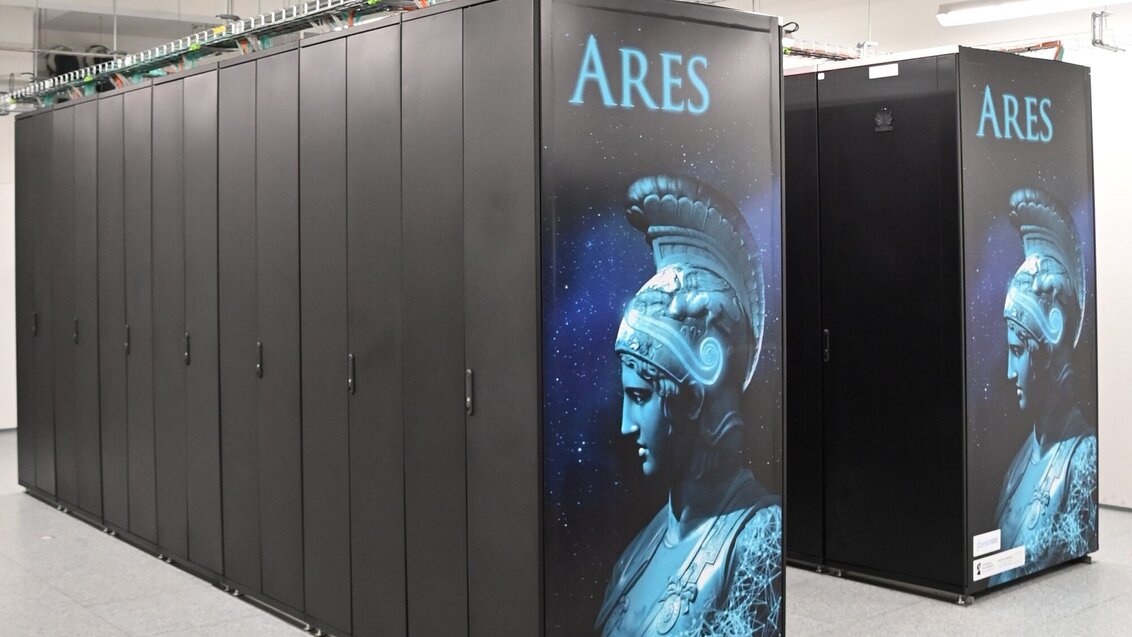Ares – a warrior of science
The Ares supercomputer offers a total computing power of more than 4 PFlops (theoretical efficiency of the CPU is more than 3.5 PFlops and of the GPU – more than 0.5 PFlops). It was built using computing servers with Intel processors (Xeon Platinum model), divided into three groups:
- 532 servers, each equipped with 192 GB RAM
- 256 servers, each equipped with 384 GB RAM
- 9 servers, each with 8 NVIDIA Tesla V100 cards.
The supercomputer has 37,824 processing cores. Ares is also supported by a disc system with a total capacity of more than 11 PB. To transfer data, it uses an InfiniBand EDR type of network. On the TOP500 list published in May, Ares was placed at the 362nd position.
World leaders in energy efficiency
Simultaneously with the announcement of the TOP500 list of supercomputers with the greatest computing power, the Green500 list of supercomputers with the highest energy efficiency is published, calculated as the ratio of floating-point operations per second (supercomputer computing power) and energy consumption: GFlops/W. It is a huge success for Athena to occupy the 19th place on the Green500 list of the most energy efficient supercomputers in the world. This place testifies to an excellent ratio of available computing power and energy consumption. Ares also made it to the list, achieving the 101st place.
Scientific calculations from various fields
Scientists who carry out their research using the CYFRONET infrastructure represent a variety of disciplines. Advanced modelling and numerical computing are used mainly in chemistry, biology, physics, medicine, and materials science, but also in astronomy, geology, and environmental protection. The research topics include dynamic analysis of ceramic composite materials, modelling and optimisation of an energy-efficient prototype vehicle powered by hydrogen, simulation of molecular dynamics of electrolytes for ion batteries, or machine learning techniques to analyse large collections of data accumulated through astrophysical plasma simulations, and many others. The CYFRONET supercomputers are used, among other things, for the needs of high-energy physics (ATLAS, LHCb, ALICE, and CMS projects), astrophysics (CTA, LOFAR), Earth sciences (EPOS), European Spallation Source (ESS), biology (WeNMR), and the humanities and social sciences (CLARIN).
Poland, Europe, and the world
The title of the fastest supercomputer in the world once again went to Frontier, installed at Oak Ridge National Laboratory (ORNL) in the United States. Frontier is the first supercomputer to break the barrier of 1 EFlops (1018), and its theoretical computing power is 1685.65 Pflops (1.69 Eflops).
Once more, the fastest European supercomputer is LUMI, built due to a collaboration of 10 European countries, including Poland. The theoretical computing power of LUMI is 429 PFlops. Polish scientists can access it via the PLGrid infrastructure. The access is coordinated by the Academic Computer Centre. More details on the subject are available here.
Polish supercomputers on the TOP500 list
The most recent TOP500 list included three supercomputers from Poland. The ranking presents itself accordingly:
- 123 – Academic Computer Centre CYFRONET, Athena (7,710 TFlops)
- 186 – Poznan Supercomputing and Networking Center, Altair (5,880 TFlops)
- 362 – Academic Computer Centre CYFRONET, Ares (3,510 TFlops).
Use the power of supercomputers in your research
Supercomputers significantly reduce the amount of time necessary to perform calculations to several hours or weeks, which would otherwise take many years (in some real-life cases, it could be more than 150, 700, or even 1,000 years). CYFRONET users have access to professional support – trainings and individual consultations with experts. All details related to the resources of CYFRONET are available at https://www.cyfronet.pl/en/, and the list of services provided by the PLGrid infrastructure can be found in the Application Catalogue (in Polish). Signing up for the PLGrid Portal (portal.plgrid.pl) provides access to a wide range of unique services.



 Pre-election meeting with a candidate for the position of rector
Pre-election meeting with a candidate for the position of rector  Agreement on cooperation with OPAL-RT
Agreement on cooperation with OPAL-RT  Krakow DIANA Accelerator consortium members with an agreement
Krakow DIANA Accelerator consortium members with an agreement  Meeting with the Consul General of Germany
Meeting with the Consul General of Germany  More Academic Sports Championships finals with medals for our students
More Academic Sports Championships finals with medals for our students  Launch of AGH University Student Construction Centre
Launch of AGH University Student Construction Centre  Bronze for our swimmers at Academic Championships
Bronze for our swimmers at Academic Championships  Smart mountains. AGH University scholar develops an intelligent mountain rescue aid system
Smart mountains. AGH University scholar develops an intelligent mountain rescue aid system